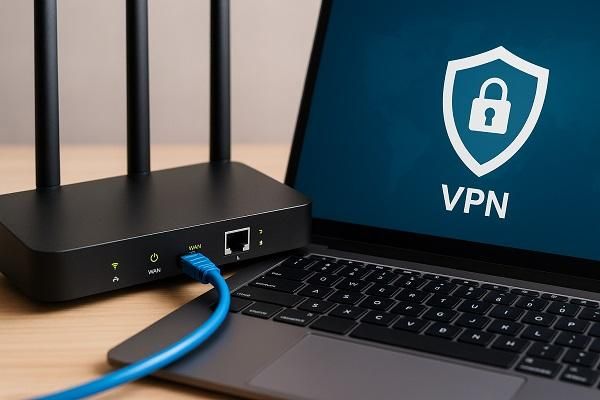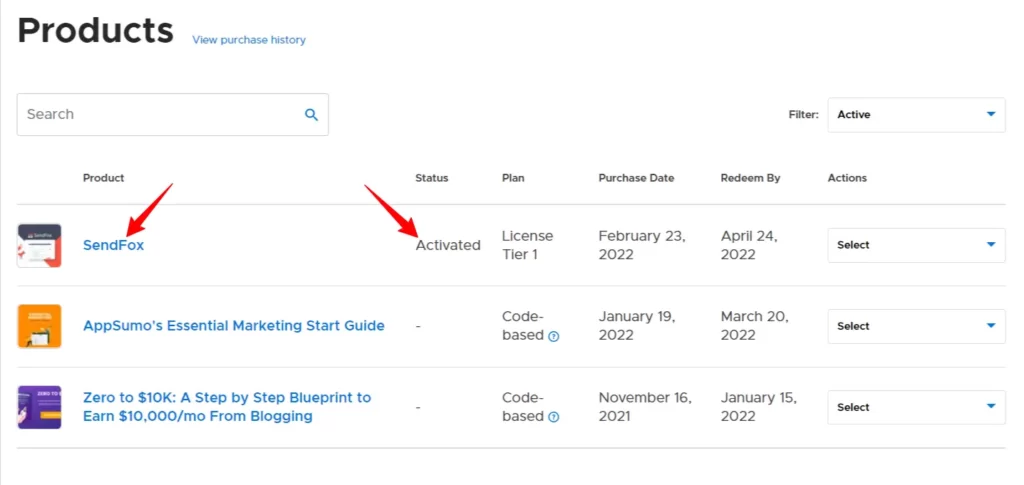Software
AppSumo Review : Is It a Good Resource for Deals? [2022 Review]

About AppSumo
Appsumo.com is a new site on the internet that offers you all kinds of deals for apps and software. They offer everything from high quality items to budget-friendly ones, so it is the best source for finding your perfect app!
What is Appsumo.com?
If you’re looking for a resource to help you get the most out of app marketing, AppSumo is a great place to start. Here’s a look at some of the benefits of using AppSumo:
- You can find and review the best apps in the market.
- You can find new and innovative ways to market your apps.
- You can save money on app development costs by finding and using existing solutions.
- You can learn from other app marketers and improve your marketing skills.
How to Sign Up for Appsumo.com?
If you’re like most people, you’ve probably heard of Appsumo.com, but you don’t know what it is or how to sign up for it. In this blog post, we’ll show you how to do just that!
How to Shop at Appsumo.com?
As a savvy shopper, you know that there are a ton of great deals to be had online. But where do you start? One great place to find deals is Appsumo.com.
Here’s how to shop at Appsumo:
- First, sign up for an account at Appsumo.com. It’s free to sign up, and you’ll be able to see all of the amazing deals that the site has to offer right away.
- Next, use the “search bar” at the top of the page to find the product or category that you’re interested in. You can search by keyword, brand, or even category (like “tech” or “beauty”).
- Once you find the product or category that you want, click on the “deals” tab on the left-hand side of the page. This will take you to a list of all of the latest deals available for that product or category.
- Be sure to check out each deal carefully before clicking on it – you might be surprised at how much savings you can get!!!
- Once you have found the latest deal, click on the “apply” button that appears below it to get started.
- This will take you to a Terms and Conditions page. Be sure to read these carefully (and understand them) so that you don’t accidentally violate any rules of the site!
- Once you have completed all of the information required, click on “cancel” in order to complete your purchase and begin saving money right away!
- After completing your purchase, be sure to confirm that it was received by clicking on “My Orders” at the top of the page, where you should find a confirmation email in your inbox shortly afterward – if not, simply contact the customer support team.
Resources on Appsumo.com
Appsumo is a great resource for finding deals on products and services. The website has a wide variety of options, so there’s something for everyone.
Some of the best deals on Appsumo are the monthly subscription boxes. These boxes contain different products each month, and they’re a great way to try out new things without spending a lot of money.
Another great thing about Appsumo is that you can always find new deals on the website. It’s constantly updating its offerings, so you’ll never run out of options.
Conclusion
Appsumo.com is a great resource for finding cool and unique products at a fraction of the cost. Plus, you can use their deals to score some pretty awesome gear! I definitely recommend checking out their site if you’re in need of some new gadgets or tools, or if you just want to save some money on something you already own. Thanks for reading!

Software
7 Proven Ways to Fix Your Laptop Touchscreen Not Responding: Causes and Solutions

Introduction
Laptop Touchscreen have become increasingly popular due to their versatility, ease of use, and productivity advantages. They combine the traditional keyboard and trackpad with the convenience of touch-based input, making tasks like drawing, note-taking, scrolling, and navigation intuitive and efficient. Devices such as 2-in-1 laptops and convertibles rely heavily on touch functionality to provide a seamless user experience.
However, when a Laptop Touchscreen suddenly stops responding, it can be extremely frustrating. Users may find themselves unable to interact with apps, perform gestures, or even navigate the operating system effectively. Unlike a keyboard or mouse issue, Laptop Touchscreen problems can halt workflow completely, making it essential to identify the root cause and apply proper solutions.
In this guide, we will explore why Laptop Touchscreen stop working, step-by-step troubleshooting techniques, preventive measures, and professional solutions. Following this guide ensures users can restore Laptop Touchscreen functionality efficiently and maintain their devices in optimal condition.

Common Causes of Laptop Touchscreen Not Responding
Several factors can lead to a Laptop Touchscreen becoming unresponsive. Understanding these causes is the first step in troubleshooting.
1. Software Glitches
-
Operating system errors, temporary bugs, or background conflicts can interfere with Laptop Touchscreen responsiveness.
-
Minor software glitches often occur after:
-
Installing new applications
-
Recent OS updates
-
System crashes
-
2. Outdated or Corrupted Drivers
-
Laptop Touchscreen rely on drivers to communicate with the operating system.
-
If the Laptop Touchscreen driver is outdated, corrupted, or incompatible after an update, it can cause the screen to stop detecting touch inputs.
3. Disabled Touchscreen Functionality
-
Some laptops allow users to disable the Laptop Touchscreen via Device Manager or system settings.
-
Accidentally disabling this option, especially after troubleshooting other hardware issues, can make the Laptop Touchscreen unresponsive.
4. Calibration Issues
-
Laptop Touchscreen devices may lose accuracy if the touch input calibration is incorrect.
-
Users may notice the cursor registering in the wrong location or touches not being detected at all.
5. Physical Damage
-
Cracked screens, liquid spills, or pressure on the display can damage the digitizer, the component responsible for detecting touch.
-
Even minor cracks may cause areas of the screen to stop responding.
6. Malware or Virus Infection
-
Certain malware can affect system performance, including Laptop Touchscreen input recognition.
-
Malware interfering with system processes may indirectly cause the Laptop Touchscreen to freeze or become unresponsive.
7. Hardware Component Failure
-
Touchscreen functionality depends on multiple components:
-
Digitizer
-
Ribbon cables connecting screen to motherboard
-
Controller IC
-
-
Faulty hardware components or loose connections can result in complete touchscreen failure.
8. External Devices Interference
-
USB devices, docking stations, or peripherals can sometimes conflict with Laptop Touchscreen drivers, causing the screen to stop responding.
-
Disconnecting unnecessary peripherals can help determine if they are the root cause.
9. System Overload or Memory Issues
-
Excessive running applications or insufficient system resources can temporarily disable touchscreen input.
-
Users may notice Laptop Touchscreen lag or unresponsiveness during high CPU or RAM usage.
Part 2: Step-by-Step Basic Fixes
Before diving into more advanced solutions, many Laptop Touchscreen issues can be resolved with simple, practical steps. These basic fixes are quick, easy, and safe for most users.
1. Restart Your Laptop
-
Sometimes, a temporary software glitch can prevent the Laptop Touchscreen from responding.
-
Steps:
-
Save all work and close applications.
-
Restart the laptop normally.
-
Test the Laptop Touchscreen after reboot.
-
💡 Tip: For laptops with removable batteries, powering down completely and removing the battery for a minute can sometimes clear minor hardware glitches.
2. Clean the Screen
-
Dirt, fingerprints, or moisture can interfere with the touch sensor.
-
Use a microfiber cloth and a small amount of screen cleaner.
-
Avoid harsh chemicals or spraying liquid directly on the screen.
3. Disconnect External Devices
-
USB devices, docking stations, or peripherals may conflict with Laptop Touchscreen drivers.
-
Steps:
-
Disconnect all external devices.
-
Restart the laptop.
-
Test the touchscreen to see if it responds.
-
4. Toggle Tablet Mode (Windows)
-
Many Windows Laptop Touchscreen have a Tablet Mode setting.
-
Steps:
-
Click the Action Center icon in the taskbar.
-
Toggle Tablet Mode on and then off.
-
Check if Laptop Touchscreen functionality is restored.
-
5. Recalibrate the Touchscreen
-
Misaligned calibration can make touches inaccurate or unresponsive.
-
Steps (Windows):
-
Go to Control Panel → Hardware and Sound → Tablet PC Settings → Calibrate.
-
Follow the on-screen instructions to recalibrate the Laptop Touchscreen.
-
-
For macOS, calibration is usually automatic, but third-party apps may help for external devices.
6. Check for System Updates
-
Outdated operating systems can cause touch input issues.
-
Steps:
-
Windows: Settings → Update & Security → Windows Update → Check for updates.
-
macOS: System Preferences → Software Update.
-
-
Install any pending updates, then restart and test the Laptop Touchscreen.
7. Perform a Clean Boot
-
Software conflicts can disable touchscreen functionality.
-
Steps (Windows):
-
Press Windows + R, type
msconfig, and hit Enter. -
Under Services, check Hide all Microsoft services, then click Disable all.
-
Under Startup, disable all startup items.
-
Restart the laptop and check Laptop Touchscreen functionality.
-
💡 Tip: If the Laptop Touchscreen works after a clean boot, a third-party application may be causing the problem.
8. Perform a Soft Reset (2-in-1 Laptops)
-
On some convertible laptops, a soft reset can restore Laptop Touchscreen input without affecting data.
-
Steps:
-
Turn off the laptop completely.
-
Press and hold the power button for 10–15 seconds.
-
Power on the laptop and test the Laptop Touchscreen.
-

Part 3: Intermediate Troubleshooting
If basic fixes did not restore Laptop Touchscreen functionality, intermediate troubleshooting focuses on driver updates, system settings, and device services. These steps require slightly more technical adjustments but are generally user-friendly.
1. Check Device Manager
-
The Device Manager shows all hardware and their status.
-
Steps:
-
Press Windows + X → Select Device Manager.
-
Expand Human Interface Devices (HID).
-
Look for items like HID-compliant touch screen.
-
If it has a yellow warning icon, right-click → Update driver or Enable device.
-
💡 Tip: If the Laptop Touchscreen is missing entirely, it may indicate a hardware issue or driver corruption.
2. Update or Reinstall Touchscreen Drivers
-
Touchscreens rely on drivers to communicate with the operating system.
-
Updating drivers can resolve unresponsiveness:
-
Right-click HID-compliant touch screen → Update Driver → Search automatically.
-
-
If updating does not work, try uninstalling the driver:
-
Right-click → Uninstall device.
-
Restart the laptop; Windows should reinstall the driver automatically.
-
3. Enable Touchscreen Service
-
Windows requires the Tablet PC Input Service to be running for touch input.
-
Steps:
-
Press Windows + R, type
services.msc→ Enter. -
Locate Tablet PC Input Service or Touch Keyboard and Handwriting Panel Service.
-
Right-click → Start (if stopped) or Restart.
-
Set Startup type to Automatic.
-
4. Run Windows Troubleshooter
-
Windows has a built-in troubleshooter for hardware and devices.
-
Steps:
-
Go to Settings → Update & Security → Troubleshoot → Additional troubleshooters.
-
Select Hardware and Devices → Run the troubleshooter.
-
Follow prompts to detect and fix issues.
-
5. Check for OS Updates and Patches
-
Sometimes touchscreen problems arise after pending updates or bug fixes.
-
Steps:
-
Windows: Settings → Update & Security → Windows Update → Check for updates.
-
macOS: System Preferences → Software Update.
-
-
Install updates and restart the laptop.
6. Disable and Re-enable Touchscreen in Device Manager
-
Temporarily disabling and re-enabling the Laptop Touchscreen can reset its communication with the system.
-
Steps:
-
Device Manager → HID-compliant touch screen → Right-click → Disable device.
-
Wait 5–10 seconds → Right-click → Enable device.
-
Test Laptop Touchscreen responsiveness.
-
7. Adjust Power Management Settings
-
Sometimes Windows turns off USB/HID devices to save power, affecting Laptop Touchscreen functionality.
-
Steps:
-
Device Manager → HID-compliant touch screen → Properties → Power Management tab.
-
Uncheck Allow the computer to turn off this device to save power.
-
Click OK and restart.
-
8. Test Touchscreen in Safe Mode
-
Booting in Safe Mode disables third-party software and helps isolate conflicts.
-
Steps (Windows 10/11):
-
Press Shift + Restart → Troubleshoot → Advanced options → Startup Settings → Restart → Select Safe Mode.
-
Test Laptop Touchscreen; if it works, a third-party app may be causing the issue.
-
Part 4: Advanced Solutions
When basic and intermediate troubleshooting fail, advanced solutions focus on system-level fixes, firmware updates, and hardware diagnostics. These steps require caution, but they often resolve stubborn Laptop Touchscreen issues.
1. Update BIOS/UEFI Firmware
-
The BIOS/UEFI controls hardware-level functions, including Laptop Touchscreen communication.
-
Outdated firmware can prevent the Laptop Touchscreen from working correctly.
-
Steps:
-
Identify your laptop model and current BIOS version (Windows: System Information → BIOS Version/Date).
-
Visit the manufacturer’s website and download the latest BIOS/UEFI update.
-
Follow the manufacturer’s instructions carefully to avoid damaging the system.
-
⚠️ Warning: BIOS updates carry risk; do not power off the laptop during the process.
2. Perform a System Restore
-
If the Laptop Touchscreen stopped working after a recent update or software installation, restoring the system may help.
-
Steps (Windows):
-
Search Create a restore point → System Restore.
-
Choose a restore point before the issue began.
-
Follow prompts to restore your system.
-
-
macOS: Use Time Machine to revert to a previous system state.
3. Factory Reset as a Last Resort
-
A factory reset reinstalls the operating system and resets all settings.
-
This is effective if the issue is caused by deep software corruption.
-
Steps:
-
Back up all important files.
-
Follow your laptop manufacturer’s factory reset procedure.
-
Reinstall updates and test the Laptop Touchscreen.
-
⚠️ Warning: Factory reset will erase all personal data. Backup is essential.
4. Inspect Hardware Components
-
If touchscreen issues persist, the problem may be hardware-related:
-
Digitizer failure: The Laptop Touchscreen sensor may be damaged.
-
Loose ribbon cables: Internal connectors may be disconnected or damaged.
-
Controller IC or motherboard issues: Can prevent touch signals from reaching the OS.
-
-
Steps:
-
Consult a certified technician or manufacturer service center for inspection.
-
5. Test Touchscreen with External Tools
-
Some manufacturers provide diagnostic tools to test Laptop Touchscreen functionality:
-
HP: HP Hardware Diagnostics
-
Dell: Dell SupportAssist
-
Lenovo: Lenovo Diagnostics
-
-
These tools can help determine whether the issue is hardware or software.
6. Check for Environmental or External Factors
-
Extreme temperatures, moisture, or magnetic interference can temporarily affect touchscreens.
-
Steps:
-
Ensure the laptop is at normal operating temperature.
-
Keep liquids and magnets away from the screen.
-
Test touchscreen responsiveness in a controlled environment.
-
7. Consider Professional Repair
-
If all software and firmware solutions fail, professional repair may be necessary.
-
Authorized service centers can:
-
Replace damaged digitizers or screens.
-
Repair or reconnect ribbon cables.
-
Diagnose motherboard-level faults affecting touchscreen input.
-
Part 5: Preventive Measures
Once your laptop touchscreen is functioning properly, it’s essential to take steps to prevent future issues. Many touchscreen problems are avoidable with proper care, software maintenance, and awareness of environmental factors.
1. Keep Drivers and Firmware Updated
-
Regularly check for updates for:
-
Touchscreen drivers
-
Operating system updates
-
BIOS/UEFI firmware
-
-
Updates often include bug fixes, security patches, and performance improvements that keep the touchscreen responsive.
2. Use a Screen Protector Carefully
-
High-quality screen protectors prevent scratches but may affect touch sensitivity if poorly applied.
-
Use protectors recommended by the manufacturer.
-
Avoid adding multiple layers of protection that reduce touch responsiveness.
3. Avoid Excessive Pressure or Sharp Objects
-
Do not tap the screen with sharp objects or apply excessive force.
-
Use your finger or compatible stylus to prevent damage to the digitizer.
4. Maintain Proper Environmental Conditions
-
Touchscreens are sensitive to:
-
Extreme temperatures
-
Excessive humidity or moisture
-
Magnetic interference
-
-
Use the laptop in controlled environments to avoid temporary or permanent malfunctions.
5. Clean the Screen Regularly
-
Accumulated dirt, dust, and oils can interfere with touch recognition.
-
Use a microfiber cloth and screen-safe cleaner.
-
Avoid spraying liquid directly on the screen to prevent damage.
6. Avoid Malware and Conflicting Software
-
Install a reputable antivirus and avoid suspicious downloads.
-
Malware or incompatible software can interfere with touchscreen drivers and system processes.
-
Run regular scans and software maintenance.
7. Calibrate the Touchscreen Periodically
-
Touchscreen calibration may drift over time, affecting accuracy.
-
Recalibrate the touchscreen when you notice input lag or misalignment.
-
Steps (Windows): Control Panel → Hardware and Sound → Tablet PC Settings → Calibrate
8. Disconnect Peripherals When Not Needed
-
USB devices, external monitors, and docking stations may conflict with the touchscreen driver.
-
Disconnect unnecessary peripherals and test the touchscreen if issues arise.
9. Backup Settings and System
-
Maintain regular system backups using Windows Backup or Time Machine on macOS.
-
Backing up allows you to restore your system quickly if touchscreen issues occur after updates or software changes.
10. Educate Users
-
If multiple people use the laptop, teach them:
-
Proper touchscreen handling
-
Avoiding accidental disabling of the touchscreen
-
Reporting small glitches early before they escalate
-

Part 6: When to Seek Professional Help
While many touchscreen problems can be resolved through software fixes and basic maintenance, there are situations where professional assistance is necessary. Recognizing these scenarios early can save time, prevent further damage, and restore your laptop’s functionality efficiently.
1. Persistent Unresponsiveness After All Fixes
-
If the touchscreen remains unresponsive after basic, intermediate, and advanced troubleshooting, it is likely a hardware-related issue.
-
Professional technicians can diagnose hidden faults in the digitizer, ribbon cables, or motherboard.
2. Physical Damage to the Screen
-
Cracks, dents, or liquid damage can compromise the touchscreen digitizer, which is often not repairable at home.
-
Attempting DIY repairs may void warranties or worsen the damage.
3. Malfunctioning Digitizer or Controller
-
If diagnostics indicate the digitizer or touchscreen controller IC is faulty, professional repair or replacement is necessary.
-
Symptoms include:
-
Only certain areas of the screen responding
-
Ghost touches or random input
-
Complete touch failure despite software fixes
-
4. Motherboard-Level Issues
-
Rarely, touchscreen failures are due to motherboard faults affecting touch input.
-
Signs include:
-
Hardware diagnostic tools showing no touchscreen detected
-
Short-circuit or electrical failure indicators
-
-
These issues require specialized repair services.
5. Warranty or Manufacturer Service
-
If your laptop is under warranty, contacting manufacturer support is preferable.
-
Authorized service centers can:
-
Replace damaged screens or digitizers
-
Fix internal connection problems
-
Perform firmware restoration safely
-
6. When to Avoid DIY Repairs
-
Avoid opening the laptop for:
-
Digitizer replacement if unfamiliar with hardware
-
Ribbon cable reconnection without proper tools
-
BIOS flashing outside manufacturer guidelines
-
-
DIY attempts can cause permanent damage or void warranty coverage.
7. Backup and Documentation
-
Before sending your laptop for professional repair:
-
Backup all important files.
-
Document system information, touchscreen symptoms, and any troubleshooting steps attempted.
-
-
This helps technicians diagnose and resolve the issue faster.
Part 7: FAQs (Frequently Asked Questions)
Here are some common questions users have when their laptop touchscreen is not responding, along with practical solutions.
1. Why did my touchscreen stop working after a Windows update?
-
Updates can sometimes overwrite drivers or change system settings, causing touchscreens to stop responding.
-
Solution:
-
Update the touchscreen driver via Device Manager.
-
Use System Restore to revert to a point before the update.
-
2. How do I recalibrate my touchscreen?
-
Recalibration ensures touch input aligns correctly with the display.
-
Steps (Windows):
-
Go to Control Panel → Hardware and Sound → Tablet PC Settings → Calibrate
-
Follow the on-screen instructions.
-
-
macOS touch devices typically auto-calibrate; third-party apps may help with external touchscreens.
3. Can malware affect my touchscreen?
-
Yes, malware interfering with system processes or HID drivers can cause touchscreen lag or unresponsiveness.
-
Solution: Run a full antivirus scan and remove suspicious programs.
4. How can I test if it’s a hardware problem?
-
Use diagnostic tools from your manufacturer (HP, Dell, Lenovo, etc.)
-
Boot into Safe Mode: if the touchscreen works here, it is likely a software conflict.
-
If unresponsive in all modes, the issue is likely hardware-related.
5. Why does only part of my touchscreen respond?
-
This usually indicates digitizer damage or loose internal connections.
-
Partial response is rarely fixable through software; professional repair is recommended.
6. Can antivirus or security software block touchscreen functionality?
-
Rarely, but some system-protection software may interfere with HID devices.
-
Temporarily disable security software to check if the touchscreen resumes working.
7. How often should I calibrate the touchscreen?
-
Calibrate when:
-
Touch inputs are inaccurate
-
The cursor registers incorrectly
-
After significant OS updates or driver reinstallations
-
8. Will a factory reset fix touchscreen issues?
-
A factory reset can resolve deep software corruption affecting the touchscreen.
-
Important: Backup your data before performing a reset.
9. How do I prevent future touchscreen problems?
-
Keep drivers and firmware updated
-
Use screen protectors carefully
-
Avoid liquids, extreme temperatures, and sharp objects
-
Disconnect unnecessary peripherals
-
Perform regular software maintenance
10. When should I seek professional help?
-
Persistent unresponsiveness after all troubleshooting steps
-
Physical damage to the screen or digitizer
-
Ghost touches, partial response, or complete failure
-
Motherboard-level or internal hardware issues
Related Post: 7 Powerful Fixes VPN Connection to Stop Your Dropping
Software
7 Powerful Fixes VPN Connection to Stop Your Dropping

1. Introduction
In today’s digital world, Virtual Private Networks (VPNs) have become an essential tool for protecting online privacy, securing sensitive data, and accessing content without geographic restrictions. Whether you are working remotely, browsing public Wi-Fi networks, or simply trying to bypass regional restrictions, a VPN creates a secure tunnel between your device and the internet, encrypting your data and masking your IP address.
However, one of the most frustrating issues users face is when their VPN connection keeps dropping. Frequent disconnections not only interrupt internet access but also compromise security, leaving your data exposed. For remote workers, this can mean interrupted video calls or lost access to critical corporate resources. For casual users, it can result in disrupted streaming or an inability to access geo-restricted content.
A VPN dropping repeatedly can stem from a wide range of causes, from simple network instability to more complex configuration conflicts. Common triggers include weak internet VPN Connection, overloaded VPN servers, software bugs, firewall restrictions, or misconfigured settings on your device or router. Because VPNs rely on both local device settings and remote server communication, even minor issues can lead to unexpected disconnections.
The good news is that most VPN disconnection problems can be addressed with practical solutions. Simple steps such as switching servers, updating VPN apps, or adjusting network settings often restore stability. In more persistent cases, advanced troubleshooting methods like examining VPN logs, adjusting MTU settings, or modifying protocol choices can resolve deeper issues.
This guide is designed to provide a comprehensive roadmap to understanding, diagnosing, and fixing VPN disconnection problems. We will start by explaining how VPNs work and the role of different protocols and servers in maintaining a stable VPN Connection. Then, we will explore common causes of dropped VPN connections, followed by a detailed list of quick fixes and advanced troubleshooting strategies. Finally, we will outline preventive measures to ensure your VPN remains stable, secure, and reliable in the long term.
By the end of this article, readers will not only understand why their VPN connection may drop but also gain actionable solutions to restore stability and prevent future interruptions. A reliable VPN connection is critical for maintaining online privacy, ensuring security, and enjoying uninterrupted internet access. Whether you are a casual user, a remote employee, or an IT professional managing multiple devices, understanding the mechanics of VPN stability and applying effective fixes will empower you to stay protected and connected at all times.

2. Understanding VPN Connections
A Virtual Private Network (VPN) is a service that allows you to create a secure and encrypted VPN Connection over a less secure network, such as the internet. Essentially, a VPN acts as a tunnel between your device and the VPN server, ensuring that all your online activity remains private, protected, and anonymized. Understanding how VPNs function is crucial to diagnosing why a VPN Connection might keep dropping.
2.1 How VPNs Work
When you connect to a VPN:
-
Data Encryption: All your internet traffic is encrypted before leaving your device. This prevents hackers or ISPs from viewing your activity.
-
Server Routing: The encrypted data is routed through a VPN server. The server masks your real IP address and assigns a new one based on its location.
-
Decryption: The server decrypts the data and sends it to the destination website or service. Responses are then encrypted and sent back to your device.
This process creates a secure tunnel that protects sensitive information, hides your location, and allows access to region-restricted content.
2.2 VPN Protocols
VPN stability is heavily influenced by the protocol in use. Different protocols manage data transfer and encryption differently:
-
OpenVPN: Highly secure and versatile, compatible with most devices. It may be slower on congested networks but offers strong encryption.
-
IKEv2/IPSec: Excellent for mobile devices due to its ability to quickly reconnect after a network change.
-
WireGuard: A newer protocol known for speed and security, often more stable on modern networks.
-
L2TP/IPSec: Provides decent security but can be blocked by strict firewalls.
-
PPTP: Older and faster but less secure; prone to disconnections and vulnerabilities.
Choosing the right protocol can significantly improve VPN stability. Some VPN apps automatically select the best protocol based on your network, while others allow manual configuration.
2.3 Role of Servers in VPN Stability
VPN servers play a crucial role in maintaining a stable VPN Connection:
-
Server Load: Overloaded servers with too many users can cause slower speeds and frequent drops.
-
Server Location: Connecting to geographically distant servers can increase latency and reduce reliability.
-
Server Type: Shared servers may be less stable than dedicated or premium servers.
Switching servers is often one of the first steps in fixing a dropping VPN connection.
2.4 Factors Affecting VPN Reliability
Several elements beyond the VPN itself can influence stability:
-
Internet Connection Quality: A weak or unstable connection often leads to VPN disconnections.
-
Network Changes: Switching between Wi-Fi and mobile data can temporarily drop the VPN.
-
Device Performance: Older or overloaded devices may struggle to maintain encrypted VPN Connection.
-
Firewall or Security Software: Some firewalls and antivirus programs block VPN traffic, causing frequent drops.
2.5 Importance of Understanding VPN Mechanics
By understanding the fundamentals of how VPNs operate, users can better identify why their VPN Connection might drop. Whether the issue stems from protocol choice, server load, or local network conditions, this knowledge allows for informed troubleshooting.
3. Common Causes of VPN Dropping
Understanding why a VPN connection keeps dropping is crucial to troubleshooting and maintaining a stable, secure connection. VPN disconnections can arise from various factors, ranging from network issues and server overloads to device settings and software conflicts. Below, we explore the most common causes in detail.
3.1 Poor or Unstable Internet Connection
A VPN relies on a stable internet connection to maintain its encrypted tunnel.
-
Weak Wi-Fi Signals: Low signal strength can cause the VPN to disconnect intermittently.
-
Intermittent Network Drops: Fluctuating connectivity from your ISP can disrupt the VPN tunnel.
-
High Latency: Slow response times make it difficult for the VPN to maintain a stable connection.
Clues: The VPN drops frequently during heavy internet use, like streaming or video calls.
3.2 VPN Server Overload
VPN servers can handle only a limited number of simultaneous VPN Connection:
-
High Traffic Servers: Popular servers may become overloaded during peak hours.
-
Shared vs Dedicated Servers: Shared servers are more prone to slowdowns and disconnections.
-
Server Location: Connecting to a distant server can introduce latency and increase disconnection risk.
Clues: Switching to a less crowded or geographically closer server often improves stability.
3.3 Incompatible VPN Protocols
Different VPN protocols handle data and encryption differently, impacting stability:
-
PPTP: Less secure and prone to frequent drops.
-
OpenVPN (UDP): Can be blocked by restrictive networks.
-
IKEv2: Reconnects quickly after network changes, but may conflict with older devices.
Clues: Changing the protocol in your VPN settings often resolves disconnections.
3.4 VPN Software Bugs or Outdated Apps
Bugs or outdated versions can create persistent VPN Connection issues:
-
Software Glitches: Improper handling of encryption or server selection may cause drops.
-
Version Conflicts: Older VPN apps may be incompatible with your device’s OS updates.
Clues: Updating the VPN app or reinstalling often resolves the problem.
3.5 Conflicting Applications or Firewalls
Certain applications or security programs can interfere with VPN connections:
-
Antivirus Software: May block VPN traffic or misidentify it as a threat.
-
Firewalls: Restricting ports required for VPN protocols can cause disconnections.
-
Other Network Tools: Apps like bandwidth managers or parental controls may conflict.
Clues: Temporarily disabling these programs can restore VPN stability.
3.6 ISP Throttling or VPN Blocking
Some internet service providers deliberately throttle or block VPN traffic:
-
Bandwidth Limiting: Reduces speeds when VPN usage is detected.
-
Port Blocking: Prevents certain protocols from establishing VPN Connection.
Clues: Switching ISPs, using a different VPN server, or changing protocols may resolve the issue.
3.7 Network Switching (Wi-Fi ↔ Mobile Data)
Switching between networks often drops VPN connections:
-
Mobile Devices: Handover between Wi-Fi and cellular data can interrupt VPN tunnels.
-
Laptops/Tablets: Moving between networks can cause temporary disconnections.
Clues: IKEv2 protocol is better at handling network changes without dropping.
3.8 Device Performance Issues
Overloaded or older devices may struggle to maintain encrypted VPN tunnels:
-
CPU Overload: Encryption requires processing power; multitasking can cause drops.
-
Low RAM: Memory shortages may prevent VPN apps from running properly.
-
Battery Saver Modes: Some power-saving settings disable background processes, affecting VPN stability.
Clues: Disabling battery saver or closing background apps can improve VPN reliability.
3.9 Router or NAT Issues
Routers and network configurations can affect VPN connections:
-
NAT Types: Some NAT settings block VPN traffic.
-
Firmware Issues: Outdated router firmware may interfere with VPN tunneling.
-
Double NAT: Occurs when multiple routers are on the same network, causing instability.
Clues: Updating router firmware or changing NAT settings may resolve the drops.
3.10 Misconfigured VPN Settings
Incorrect configuration can lead to frequent disconnections:
-
MTU Settings: Wrong Maximum Transmission Unit can cause packet fragmentation.
-
Split Tunneling: Improper setup can disconnect certain apps from the VPN.
-
Kill Switch Misconfiguration: Some kill switch settings may terminate VPN unexpectedly.
Clues: Reviewing and resetting VPN settings often restores stability.
3.11 Summary of Common Causes
The main factors causing VPN disconnections include:
-
Poor or unstable internet VPN Connection
-
Overloaded VPN servers
-
Incompatible VPN protocols
-
VPN software bugs or outdated apps
-
Conflicting applications, firewalls, or antivirus
-
ISP throttling or blocking VPN traffic
-
Network switching between Wi-Fi and mobile data
-
Device performance limitations
-
Router or NAT issues
-
Misconfigured VPN settings
By identifying which category the problem falls into, users can apply the appropriate solutions, whether it’s changing servers, updating software, adjusting device settings, or consulting their VPN provider for support.
4. Quick Fixes for VPN Dropping
Once you understand the common causes of VPN disconnections, the next step is implementing practical solutions. Many VPN issues can be resolved without advanced technical knowledge. By applying simple adjustments to your software, device, or network, you can restore a stable VPN Connection. Below, we explore the most effective quick fixes.
4.1 Restart VPN App and Device
Sometimes, the simplest solution is the most effective:
-
Restart the VPN app: Close the application completely and reopen it.
-
Reboot your device: Restarting clears temporary glitches in the operating system that may affect VPN performance.
-
Check for background apps: Close unnecessary apps that may interfere with VPN connections.
Tip: Always give your device a few seconds to fully reset network connections before reconnecting to the VPN.
4.2 Switch VPN Server Location
The server you connect to plays a critical role in stability:
-
Overloaded servers: Avoid servers with high traffic to reduce disconnections.
-
Geographic proximity: Connecting to a nearby server reduces latency and improves speed.
-
Test multiple servers: Some VPN providers allow automatic server selection based on load.
Tip: Premium VPN services often provide real-time server load indicators, helping you choose a stable VPN Connection.
4.3 Change VPN Protocol
Protocols manage how your VPN encrypts and transmits data:
-
Try different protocols: Switching from OpenVPN UDP to TCP, or to IKEv2/WireGuard, can improve stability.
-
Consider protocol strengths: TCP is slower but more stable; UDP is faster but may drop during unstable connections.
-
Mobile devices: IKEv2 reconnects faster when switching networks.
Tip: Test multiple protocols to identify which works best for your network conditions.
4.4 Ensure Stable Internet Connection
A reliable internet VPN Connection is fundamental for VPN performance:
-
Check Wi-Fi signal strength: Move closer to the router if the signal is weak.
-
Switch to a wired connection: Ethernet provides more stability than Wi-Fi.
-
Limit bandwidth-intensive applications: Pause downloads, streams, or cloud backups during VPN use.
Tip: Run a speed test to verify your VPN Connection is sufficient for VPN tunneling.
4.5 Disable Conflicting Apps or Firewalls Temporarily
Some software may interfere with VPN connections:
-
Antivirus/Firewall: Temporarily disable to see if the VPN stabilizes.
-
Other network management apps: Close apps that manage bandwidth, DNS, or security.
-
Browser extensions: Some extensions may conflict with VPN traffic.
Tip: Always re-enable security software after troubleshooting to maintain protection.
4.6 Update VPN Software
Outdated VPN clients can cause instability:
-
Check for updates: Developers release patches to fix bugs and improve stability.
-
Automatic updates: Enable auto-update if available.
-
Reinstall if necessary: Uninstall the VPN, download the latest version, and reinstall.
Tip: Ensure that the new version is compatible with your device’s OS.
4.7 Adjust Device Sleep and Power-Saving Settings
Some devices disconnect the VPN to save power:
-
Disable battery saver mode: Prevents the device from suspending background apps.
-
Adjust sleep settings: Ensure your device remains active while using the VPN.
-
Mobile devices: Keep the VPN app in the foreground when possible.
Tip: On laptops, plug in while using VPN for longer stability sessions.
4.8 Use a Wired Connection If Possible
Wi-Fi is convenient but often less stable than Ethernet:
-
Ethernet cables: Offer lower latency and less interference.
-
Avoid public Wi-Fi: Public networks may drop VPN connections frequently.
-
Test connection speeds: Wired VPN Connection usually maintain more consistent throughput.
Tip: Combine a wired connection with nearby server selection for maximum reliability.
4.9 Contact VPN Provider Support
If quick fixes fail, your VPN provider can assist:
-
Report disconnections: Provide logs or screenshots of the issue.
-
Ask about server status: Some disconnections result from temporary maintenance or outages.
-
Request recommended settings: Providers can suggest protocols, servers, or configurations tailored to your network.
Tip: Premium VPN services often provide 24/7 live support for rapid problem resolution.
4.10 Additional Quick Tips
-
Restart router/modem: Clears network cache and resolves minor connectivity issues.
-
Test other devices: Determines if the problem is device-specific.
-
Switch DNS servers: Sometimes VPNs disconnect due to DNS resolution errors.
-
Limit simultaneous connections: Too many devices using the same VPN account can cause drops.
4.11 Summary of Quick Fixes
By following these steps, most VPN disconnection issues can be resolved quickly:
-
Restart VPN app and device
-
Switch VPN server location
-
Change VPN protocol
-
Ensure stable internet VPN Connection
-
Temporarily disable conflicting apps or firewalls
-
Update or reinstall VPN software
-
Adjust device sleep and power-saving settings
-
Use wired VPN Connection if possible
-
Contact VPN provider support
-
Apply additional tips like restarting routers and limiting connections
These quick fixes target the most common causes of VPN instability and provide actionable solutions for immediate improvement.

5. Advanced Troubleshooting for VPN Dropping
While quick fixes resolve most VPN disconnection issues, some problems require a deeper investigation. Advanced troubleshooting addresses underlying issues in network settings, device configuration, or VPN software. These methods are especially useful for persistent or complex VPN instability.
5.1 Examine VPN Logs for Errors
Most VPN clients provide logs that record VPN Connection attempts, errors, and protocol details:
-
Access logs: Most apps allow viewing logs in the settings or app folder.
-
Look for error codes: Common issues include “authentication failed,” “connection timeout,” or “network unreachable.”
-
Analyze patterns: Frequent drops during specific activities may indicate a protocol or server issue.
Tip: Sharing logs with VPN support can speed up troubleshooting.
5.2 Reset Network Settings
Resetting network settings can resolve conflicts caused by misconfigured routers or device networks:
-
Windows: Settings → Network & Internet → Network reset.
-
macOS: System Preferences → Network → Remove and re-add VPN Connection.
-
Mobile devices: Settings → Reset Network Settings (Wi-Fi, mobile data, VPN profiles).
Tip: This step often resolves IP conflicts, DNS issues, and NAT problems.
5.3 Update Device Firmware or Drivers
Outdated network drivers or device firmware can interfere with VPN stability:
-
Router firmware: Ensure the router supports VPN traffic and is updated.
-
Network drivers: Update Wi-Fi or Ethernet drivers to maintain compatibility.
-
Operating system patches: Install updates that may fix VPN-related bugs.
Tip: Regular updates prevent recurring disconnection issues.
5.4 Modify MTU (Maximum Transmission Unit) Settings
Incorrect MTU values can cause packet fragmentation, leading to dropped VPN connections:
-
Check current MTU: Most devices allow checking via command line or network settings.
-
Adjust MTU: Reduce MTU size to prevent oversized packets from causing drops.
-
Test stability: Incrementally adjust until VPN Connection stabilizes.
Tip: VPNs like OpenVPN often require MTU adjustments for certain network configurations.
5.5 Test on Different Devices or Networks
Identifying the source of the problem—device, network, or VPN server—is key:
-
Try multiple devices: Helps determine if the issue is device-specific.
-
Test on alternative networks: Switching from home Wi-Fi to a mobile hotspot can isolate ISP issues.
-
Compare results: If the VPN works elsewhere, the original network or device is likely at fault.
Tip: This method narrows down troubleshooting scope and reduces trial-and-error.
5.6 Use Split Tunneling Wisely
Split tunneling lets users route some traffic through the VPN while other traffic uses a direct VPN Connection:
-
Misconfigured split tunneling: Can lead to instability or app-specific disconnections.
-
Review VPN settings: Ensure critical traffic is routed through the VPN.
-
Test without split tunneling: Disabling it temporarily can indicate if it’s causing drops.
Tip: Only use split tunneling for trusted apps to maintain security.
5.7 Configure Kill Switch Properly
VPN kill switches prevent data leaks by blocking internet traffic if the VPN disconnects:
-
Incorrect kill switch settings: May terminate internet access unnecessarily.
-
Adjust triggers: Some VPN apps allow fine-tuning kill switch behavior.
-
Test behavior: Ensure the kill switch engages only when necessary.
Tip: A properly configured kill switch improves security without causing constant disconnections.
5.8 Check for DNS Leaks
DNS misconfigurations can indirectly cause VPN instability:
-
Use VPN-provided DNS: Many VPNs include secure DNS servers.
-
Test DNS leak: Online tools can verify if DNS requests are exposed.
-
Configure manually if needed: Set DNS to secure, VPN-compatible servers.
Tip: DNS stability often improves VPN Connection reliability and privacy.
5.9 Advanced Summary
For persistent VPN drops, consider these advanced techniques:
-
Examine VPN logs for errors and patterns
-
Reset network settings on device or router
-
Update device firmware, OS, and network drivers
-
Modify MTU settings to prevent packet fragmentation
-
Test VPN on different devices or networks to isolate issues
-
Use split tunneling correctly
-
Configure VPN kill switch properly
-
Check for DNS leaks and adjust DNS settings
These steps tackle underlying network or software issues, ensuring a more stable and secure VPN connection. While more technical than quick fixes, they are essential for users facing repeated or complex VPN disconnections.
6. Preventing Future VPN Drops
While troubleshooting can fix current VPN disconnections, preventing future drops is the best way to ensure a secure and uninterrupted VPN Connection. By following proactive strategies, users can minimize instability, maintain privacy, and enjoy a reliable VPN experience.
6.1 Choose a Reliable VPN Provider
Not all VPN providers offer the same level of stability:
-
Server Infrastructure: Opt for providers with multiple servers and locations to reduce overload.
-
High Bandwidth Servers: Premium services often allocate more bandwidth per user, improving stability.
-
24/7 Support: Reliable customer support can help resolve issues quickly.
Tip: Research VPN reviews focusing on reliability and speed before subscribing.
6.2 Keep Apps, Firmware, and Protocols Updated
Software updates fix bugs, improve performance, and ensure compatibility:
-
VPN Apps: Always use the latest version for your device.
-
Router Firmware: Updated firmware ensures proper handling of VPN traffic.
-
Protocols: Modern protocols like WireGuard offer faster, more stable connections.
Tip: Enable automatic updates whenever possible to reduce the risk of disconnections.
6.3 Maintain Stable Internet Connections
A consistent internet VPN Connection is foundational for VPN stability:
-
Use Ethernet When Possible: Wired connections are more reliable than Wi-Fi.
-
Avoid Unstable Networks: Public or congested networks often cause drops.
-
Monitor Connection Speed: Ensure your network meets the VPN’s bandwidth requirements.
Tip: A strong, stable internet VPN Connection minimizes interruptions caused by network instability.
6.4 Avoid Frequent Network Switching
Switching between networks or IP addresses can trigger VPN drops:
-
Mobile Devices: Use IKEv2 or WireGuard protocols that reconnect quickly during network changes.
-
Fixed Connections: Whenever possible, remain on a single network while using VPN.
Tip: Plan network usage to reduce unnecessary switching, especially during critical tasks.
6.5 Regularly Monitor VPN Performance
Monitoring ensures early detection of potential issues:
-
Check Logs: Periodically review VPN Connection logs for errors or instability patterns.
-
Speed Tests: Measure latency and throughput to identify slow servers.
-
Switch Servers Proactively: Move to less congested servers before problems arise.
Tip: Early detection can prevent temporary glitches from becoming recurring problems.
6.6 Backup VPN Settings
Having a backup ensures quick recovery in case of device changes or software updates:
-
Export Profiles: Save VPN configuration files or profiles.
-
Keep Login Credentials Safe: Avoid losing access to your VPN account.
-
Document Preferred Servers: Maintain a list of servers that provide consistent performance.
Tip: Backups simplify restoring VPN functionality after troubleshooting or reinstallation.
Final Thoughts
Preventing VPN drops combines choosing the right provider, maintaining software and network stability, and proactive monitoring. Users who follow these practices enjoy a more reliable VPN experience, enhanced security, and uninterrupted access to online resources. A stable VPN connection not only protects privacy but also ensures productivity, whether for work, streaming, or secure browsing.

7. Conclusion
A VPN is an essential tool for online privacy, security, and unrestricted internet access. However, a VPN that keeps dropping can severely disrupt your online activities, compromise security, and cause frustration. Understanding why VPN connections fail and knowing how to resolve these issues is key to maintaining a reliable and secure VPN Connection.
Throughout this guide, we explored the common causes of VPN drops, including poor internet VPN Connection, overloaded servers, incompatible protocols, software bugs, conflicts with firewalls or antivirus programs, ISP throttling, network switching, device limitations, router issues, and misconfigured VPN settings. Identifying the specific cause of a disconnection is the first step toward implementing effective solutions.
We also covered quick fixes, such as restarting the VPN app and device, switching servers, changing protocols, ensuring stable internet, disabling conflicting apps temporarily, updating or reinstalling VPN software, adjusting power-saving settings, using wired VPN Connection, and contacting VPN providers for support. These steps resolve the majority of common VPN issues efficiently.
For more persistent or complex problems, advanced troubleshooting techniques like examining VPN logs, resetting network settings, updating firmware or drivers, modifying MTU settings, testing on different devices or networks, configuring split tunneling, adjusting kill switch settings, and checking for DNS leaks provide deeper solutions. These methods address underlying technical factors that affect VPN stability.
Finally, we emphasized preventive strategies to reduce future VPN drops. Selecting a reliable VPN provider, keeping apps and firmware updated, maintaining stable internet VPN Connection, minimizing network switching, monitoring performance, and backing up VPN settings all contribute to a consistent and secure experience. By proactively managing these factors, users can enjoy uninterrupted VPN access and protect their online privacy and security.
In conclusion, a stable VPN connection is critical for both casual users and professionals who rely on secure internet access. By understanding the mechanics of VPNs, recognizing common causes of disconnections, applying practical fixes, and following preventive measures, users can minimize disruptions and maintain a seamless, secure VPN Connection. With these strategies, you can ensure your VPN remains a dependable tool for privacy, security, and freedom online.
Hosting
The Ultimate Bluehost Review: Is It the Best Web Hosting Solution?

What Is Bluehost?
Bluehost is a web hosting company that offers a variety of hosting plans, including shared hosting, VPS hosting, and dedicated hosting. It is one of the most popular web hosting providers in the world, and is known for its affordable prices, reliable uptime, and excellent customer support.
Bluehost was founded in 1996, and is headquartered in Provo, Utah. It is a subsidiary of Endurance International Group, which is one of the largest web hosting companies in the world.
Bluehost is a great choice for businesses of all sizes, from small businesses to large enterprises. It offers a variety of features and benefits that make it a reliable and affordable option for web hosting.
Bluehost is a great choice for businesses of all sizes that are looking for an affordable, reliable, and easy-to-use web hosting provider. Bluehost offers a wide range of features and benefits, and its customer support is known for being helpful and responsive.
How Bluehost Works
Bluehost is a web hosting company that provides space on its servers for people to store their websites. When you sign up for a Bluehost hosting plan, you are essentially renting space on one of its servers.
Bluehost has a variety of hosting plans to choose from, depending on your needs. If you have a small website, then you can choose a shared hosting plan. Shared hosting plans are the most affordable option, but they mean that your website will be sharing space on a server with other websites. This can sometimes lead to performance issues if your website gets a lot of traffic.
If you have a larger website, then you may want to choose a VPS hosting plan or a dedicated hosting plan. VPS hosting plans give you more control over your server resources, and dedicated hosting plans give you the entire server to yourself.
Once you have chosen a hosting plan, you will need to choose a domain name for your website. A domain name is the address of your website on the internet, such as www.example.com. Bluehost offers free domain names with some of its hosting plans.
Once you have chosen a domain name, you can start uploading your website files to Bluehost’s servers. Bluehost provides a user-friendly interface that makes it easy to upload your files and manage your website.
Bluehost also offers a variety of other features, such as email hosting, spam protection, and security features. These features can help to protect your website from hackers and other security threats.
Bluehost is a reliable and affordable web hosting provider. It offers a variety of hosting plans to choose from, and it provides a user-friendly interface that makes it easy to manage your website.
Bluehost Features
Bluehost is a popular web hosting provider that offers a wide range of features. Some of the most notable features of Bluehost include:
- Affordable prices: Bluehost’s shared hosting plans start at just $2.75 per month, which is one of the lowest prices on the market.
- Reliable uptime: Bluehost’s uptime is consistently above 99.9%, which means that your website will be up and running most of the time.
- Excellent customer support: Bluehost’s customer support is available 24/7, and is known for being helpful and responsive.
- Free domain name: When you sign up for a Bluehost hosting plan, you get a free domain name for the first year.
- Free SSL certificate: Bluehost includes a free SSL certificate with all of its hosting plans. This helps to protect your website and its visitors from hackers.
- Easy to use interface: Bluehost’s interface is easy to use, even for beginners.
- One-click installs: Bluehost makes it easy to install popular content management systems (CMS) like WordPress and Joomla with just one click.
- Managed WordPress hosting: Bluehost offers a managed WordPress hosting plan that takes care of all the technical aspects of running a WordPress website, so you can focus on creating content.
Bluehost offers a wide range of features that make it a great choice for web hosting. Whether you’re a beginner or a seasoned pro, Bluehost has the features you need to create and maintain a successful website. Bluehost’s features are a great value for the price. They are reliable, easy to use, and offer a wide range of options to suit your needs.
Bluehost Pricing And Plans
Bluehost offers a variety of hosting plans to choose from, depending on your needs. If you have a small website, then you can choose a shared hosting plan. Shared hosting plans are the most affordable option, but they mean that your website will be sharing space on a server with other websites. This can sometimes lead to performance issues if your website gets a lot of traffic.
If you have a larger website, then you may want to choose a VPS hosting plan or a dedicated hosting plan. VPS hosting plans give you more control over your server resources, and dedicated hosting plans give you the entire server to yourself.
Here is a breakdown of Bluehost’s pricing plans:
Shared Hosting
- Basic: $2.75 per month
- Plus: $5.45 per month
- Choice Plus: $5.45 per month
- Pro: $13.95 per month
VPS Hosting
- Standard: $18.99 per month
- Enhanced: $29.99 per month
- Ultimate: $59.99 per month
Dedicated Hosting
- Standard: $99.99 per month
- Enhanced: $139.99 per month
- Ultimate: $199.99 per month
Bluehost also offers a variety of other hosting plans, such as WordPress hosting, WooCommerce hosting, and reseller hosting. Bluehost’s pricing is very competitive. It offers a variety of plans to choose from, and it regularly offers discounts and promotions. Bluehost also includes a free domain name and SSL certificate with all of its plans, which is a great value.
Benefits To Using Bluehost
Bluehost is a popular web hosting provider that offers a wide range of benefits. Some of the most notable benefits of using Bluehost include:
- Affordable prices: Bluehost’s shared hosting plans start at just $2.75 per month, which is one of the lowest prices on the market.
- Reliable uptime: Bluehost’s uptime is consistently above 99.9%, which means that your website will be up and running most of the time.
- Excellent customer support: Bluehost’s customer support is available 24/7, and is known for being helpful and responsive.
- Free domain name: When you sign up for a Bluehost hosting plan, you get a free domain name for the first year.
- Free SSL certificate: Bluehost includes a free SSL certificate with all of its hosting plans. This helps to protect your website and its visitors from hackers.
- Easy to use interface: Bluehost’s interface is easy to use, even for beginners.
- One-click installs: Bluehost makes it easy to install popular content management systems (CMS) like WordPress and Joomla with just one click.
- Managed WordPress hosting: Bluehost offers a managed WordPress hosting plan that takes care of all the technical aspects of running a WordPress website, so you can focus on creating content.
Bluehost offers a wide range of benefits that make it a great choice for web hosting. Whether you’re a beginner or a seasoned pro, Bluehost has the features you need to create and maintain a successful website.
Bluehost is a great choice for web hosting. It offers a wide range of features and benefits, and its customer support is known for being helpful and responsive. However, if you’re looking for a web hosting provider with a lot of features, then Bluehost may not be the best option for you.
Ease Of Use Bluehost
Bluehost is a popular web hosting provider that is known for its ease of use. The company’s interface is designed to be user-friendly, even for beginners. Bluehost also offers a variety of tutorials and resources to help users get started.
- One-click installs: Bluehost makes it easy to install popular content management systems (CMS) like WordPress and Joomla with just one click. This means that you can get your website up and running quickly and easily.
- cPanel: Bluehost uses cPanel, which is a web-based interface that allows you to manage your website files, email accounts, and other settings. cPanel is very user-friendly and easy to navigate.
- Bluehost Support: Bluehost offers 24/7 customer support that is available via live chat, phone, and email. This means that you can get help with any problems you encounter, no matter what time of day it is.
- Tutorials and Resources: Bluehost offers a variety of tutorials and resources to help users get started with web hosting. These resources include video tutorials, blog posts, and FAQs.
Bluehost is a great choice for web hosting if you’re looking for a provider that is easy to use. The company’s interface is designed to be user-friendly, and it offers a variety of features and resources to help users get started.
Bluehost is a great choice for web hosting if you’re looking for a provider that is easy to use. The company’s interface is designed to be user-friendly, and it offers a variety of features and resources to help users get started. However, if you’re looking for a web hosting provider with a lot of features, then Bluehost may not be the best option for you.
Who Is Bluehost Best For?
Bluehost is a popular web hosting provider that is a good fit for a variety of users. Here are some of the people who would benefit from using Bluehost:
- Beginners: Bluehost is a great choice for beginners because it is easy to use and has a variety of features that can help users get started. Bluehost also offers a free trial, so users can try it out before they commit to a paid plan.
- WordPress users: Bluehost is a great choice for WordPress users because it offers a variety of features that are specifically designed for WordPress websites. These features include one-click installs, automatic updates, and a variety of plugins and themes.
- Small businesses: Bluehost is a great choice for small businesses because it offers affordable plans that can accommodate small websites. Bluehost also offers a variety of features that can help businesses grow, such as email marketing and domain registration.
- Personal users: Bluehost is a great choice for personal users who want to create a website for personal or hobby purposes. Bluehost offers affordable plans that can accommodate personal websites, and it also offers a variety of features that can help users customize their websites.
Bluehost is a great choice for a variety of users. It is easy to use, affordable, and offers a variety of features that can help users get started with web hosting.
Bluehost is a great choice for a variety of users. It is easy to use, affordable, and offers a variety of features that can help users get started with web hosting. However, if you are looking for a web hosting provider with a lot of features, then Bluehost may not be the best option for you.
Is Bluehost Right For Me?
Whether or not Bluehost is right for you depends on your individual needs and requirements. Here are some factors to consider when making your decision:
- Your budget: Bluehost offers a variety of hosting plans, so you can find one that fits your budget. However, it is important to note that some features are only available with higher-priced plans.
- Your website’s traffic: If you expect a lot of traffic to your website, you will need to choose a plan with enough resources to handle the traffic. Bluehost offers a variety of plans for high-traffic websites, but these plans are more expensive.
- Your technical expertise: If you are a beginner, you may want to choose a hosting provider that is easy to use. Bluehost is known for its user-friendly interface, so it is a good option for beginners. However, if you are more experienced, you may want to choose a hosting provider that offers more features.
- Your specific needs: If you have any specific needs, such as needing a hosting provider that offers a certain type of software or features, you will need to choose a hosting provider that can meet your needs.
Bluehost is a good option for a variety of users. It is affordable, easy to use, and offers a variety of features. However, if you are looking for a hosting provider with a lot of features, then Bluehost may not be the best option for you.
If you are still not sure if Bluehost is right for you, I recommend that you try out their free trial. This will give you a chance to test out their features and see if they meet your needs.
Bluehost Customer Support
Bluehost offers 24/7 customer support that is available via live chat, phone, and email. This means that you can get help with any problems you encounter, no matter what time of day it is.
Bluehost’s customer support is known for being helpful and responsive. In fact, Bluehost has won numerous awards for its customer support, including the 2022 WebHostingGeeks award for “Best Customer Support.”
- Live chat: Bluehost offers live chat support that is available 24/7. This is the quickest way to get help from Bluehost’s customer support team.
- Phone: Bluehost also offers phone support that is available 24/7. This is a good option if you need to speak to a customer support representative in person.
- Email: Bluehost also offers email support. This is a good option if you have a question that you can’t easily explain in a live chat or phone call.
Bluehost’s customer support is excellent. It is available 24/7, and the representatives are helpful and responsive. If you have any problems with your Bluehost account, you can be sure that you will get the help you need.
Bluehost’s customer support is excellent. It is available 24/7, and the representatives are helpful and responsive. If you have any problems with your Bluehost account, you can be sure that you will get the help you need.
Is Bluehost Worth It?
Whether or not Bluehost is worth it depends on your individual needs and requirements. Here are some factors to consider when making your decision:
- Your budget: Bluehost offers a variety of hosting plans, so you can find one that fits your budget. However, it is important to note that some features are only available with higher-priced plans.
- Your website’s traffic: If you expect a lot of traffic to your website, you will need to choose a plan with enough resources to handle the traffic. Bluehost offers a variety of plans for high-traffic websites, but these plans are more expensive.
- Your technical expertise: If you are a beginner, you may want to choose a hosting provider that is easy to use. Bluehost is known for its user-friendly interface, so it is a good option for beginners. However, if you are more experienced, you may want to choose a hosting provider that offers more features.
- Your specific needs: If you have any specific needs, such as needing a hosting provider that offers a certain type of software or features, you will need to choose a hosting provider that can meet your needs.
Bluehost is a good option for a variety of users. It is affordable, easy to use, and offers a variety of features. However, if you are looking for a hosting provider with a lot of features, then Bluehost may not be the best option for you.
Bluehost is a good value for the price. It offers a wide range of features and benefits, and its customer support is known for being helpful and responsive. However, if you are looking for a web hosting provider with a lot of features, then Bluehost may not be the best option for you.
Who Should Buy Bluehost?
Bluehost is a popular web hosting provider that is a good fit for a variety of users. Here are some of the people who would benefit from using Bluehost:
- Beginners: Bluehost is a great choice for beginners because it is easy to use and has a variety of features that can help users get started. Bluehost also offers a free trial, so users can try it out before they commit to a paid plan.
- WordPress users: Bluehost is a great choice for WordPress users because it offers a variety of features that are specifically designed for WordPress websites. These features include one-click installs, automatic updates, and a variety of plugins and themes.
- Small businesses: Bluehost is a great choice for small businesses because it offers affordable plans that can accommodate small websites. Bluehost also offers a variety of features that can help businesses grow, such as email marketing and domain registration.
- Personal users: Bluehost is a great choice for personal users who want to create a website for personal or hobby purposes. Bluehost offers affordable plans that can accommodate personal websites, and it also offers a variety of features that can help users customize their websites.
Bluehost is a great choice for a variety of users. It is easy to use, affordable, and offers a variety of features that can help users get started with web hosting.
Bluehost is a great choice for a variety of users. It is easy to use, affordable, and offers a variety of features that can help users get started with web hosting. However, if you are looking for a web hosting provider with a lot of features, then Bluehost may not be the best option for you.
FAQs
What is Bluehost?
Bluehost is a web hosting company that provides hosting services to individuals and businesses to make their websites accessible on the internet.
What hosting plans does Bluehost offer?
Bluehost offers a variety of hosting plans, including shared hosting, VPS hosting, dedicated hosting, and managed WordPress hosting.
Can I transfer my existing domain to Bluehost?
Yes, Bluehost allows you to transfer your existing domain from another registrar to their platform.
Does Bluehost offer a website builder?
Yes, Bluehost provides a website builder tool that allows users to create and design websites without coding knowledge.
Is Bluehost suitable for WordPress hosting?
Yes, Bluehost is one of the recommended hosting providers by WordPress.org and offers specialized managed WordPress hosting plans.
Does Bluehost provide SSL certificates?
Yes, Bluehost offers free SSL certificates for all websites hosted on their platform, ensuring secure connections.
What customer support options are available?
Bluehost provides 24/7 customer support through live chat, email, and phone.
Can I host an eCommerce website on Bluehost?
Yes, Bluehost supports eCommerce platforms like WooCommerce and offers features tailored for online stores.
Is there a money-back guarantee?
Yes, Bluehost typically offers a 30-day money-back guarantee for their hosting services.
What are Bluehost’s data center locations?
Bluehost operates multiple data centers, though the specific locations may not be publicly disclosed.
-

 Ecommerce3 years ago
Ecommerce3 years agoStellarWP Plugin – Learndash Learning Management System Review
-

 Ecommerce3 years ago
Ecommerce3 years agoShopify Review : Shopify is the Best eCommerce Platform.
-

 Ecommerce3 years ago
Ecommerce3 years agoTeachable Review : Online Course Platform
-

 Ecommerce3 years ago
Ecommerce3 years agoShopify Review
-

 Hosting2 years ago
Hosting2 years agoThe Ultimate Bluehost Review: Is It the Best Web Hosting Solution?
-

 Ecommerce4 years ago
Ecommerce4 years agoWhy Shopify Is Still the Best eCommerce Platform – Detail Review
-

 Ecommerce4 years ago
Ecommerce4 years agoPodia Review (2022) – Is the Platform Any Good?
-

 Ecommerce3 years ago
Ecommerce3 years agoSetting up an online store with Shopify: Advantages, Disadvantages, and Challenges
















